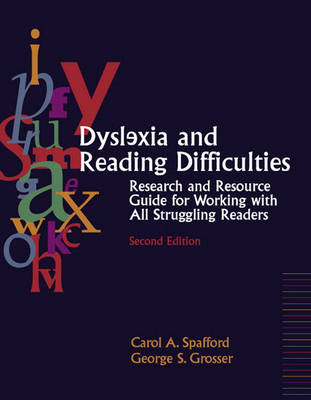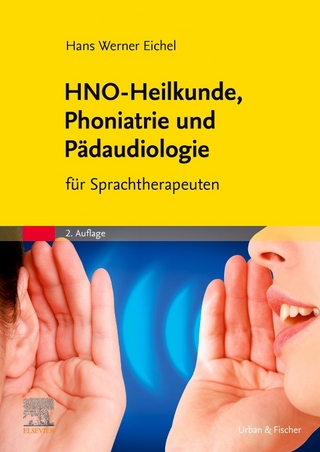
Dyslexia and Reading Difficulties
Pearson (Verlag)
978-0-205-42856-4 (ISBN)
- Titel ist leider vergriffen;
keine Neuauflage - Artikel merken
Preface.
Dedication.
1. Introduction.
Definition.
Prevalence.
International Dyslexia Association (IDA) Definition.
Identifying Characteristics of Dyslexia.
Reading and the Brain.
Cognitive Learning Styles of Some Dyslexics.
Visual System Implications and Dyslexia.
Summary of Neurophysiological Evidence.
No One Remedy or Cure for Dyslexia.
Dyslexia Myths.
Dyslexia Subtypes (Grosser & Spafford, 2000).
Other Types of Learning Disabilities.
Mathematics Disabilities.
Mathematics Learning Disabilities (MLD) Prevalence.
Mathematics Learning Disabilities (MLD): International Perspectives.
Mathematics Subtyping Based on Limited Study (Spafford & Grosser, 2005).
Attention Deficit/Hyperactivity Disorder (ADHD).
Interventions for Individuals with ADHD.
Language Learning Disabilities.
Nonverbal Learning Disabilities.
Chart: Rare Disabilities <.01 of the LD Population.
2. Dyslexia Defined.
Dyslexia Definition.
Just “What” Is Dyslexia?
Resiliency Factor.
Determining the Presence of Dyslexia or Learning Disabilities.
Discrepancies Between Achievement and Intellectual Ability.
United States Legislation–IDEA (Individuals with Disabilities Education Act) 2003 Reauthorization.
IDEA Sec. 614 (b) (6)–Specific Learning Disabilities.
Dyslexia: Historical Overview.
Ortons Contributions.
Causation Linked to Cerebral Dysfunctioning–1802 to Present.
Dyslexia-Aphasia Link.
Speech Dysfunctioning in Aphasia.
Current Conceptualization Tied into 1896 Definition.
Chart–Historical Timeline of Dyslexia Pioneers–Multisensory.
Dyslexia–A Learning Disability.
The Reading Process.
Dyslexia in Languages Other than English?
International Perspectives and Dyslexia.
Second Language Learners and Dyslexia.
The Intervention Process for Second Language Learners with Dyslexia.
Famous Individuals withy Dyslexia.
Identifying Characteristics of Gifted Dyslexics.
Case Study: An Adult Coping with Dyslexia.
Chapter 2 Summary.
3. Developing Resiliency in Individuals with Dyslexia: The Third “R”–Reading, Riting, Resiliency.
Dyslexia Definition.
Resiliency Defined.
Why Identify Resiliency?
Who?–Famous Resilient Individuals.
Factors Impacting Resiliency.
Weighting Environmental Factors and Individual Protective Factors.
Instructional Application: Knowing About Culturally-Relevant Learning.
The Role of the Family.
Literature Studies and Resiliency.
Choosing the Right Books to Nurture Resiliency.
Chapter 3 Summary.
4. Controversial Theories.
Dyslexia Definition.
The Hawthorne Effect.
Treatment Considerations.
Cerebellar-Vestibular Dysmetria (CVD)(Unproven Method).
Neural Organization Technique (NOT)(Unproven Method).
Megavitamins (Unproven Method).
Feingold K-P Diet (Kaiser Permanente)(Unproven Method).
Sound Treatment (Unproven Method).
Analysis of Mineral Levels.
Hair Mineral Analysis (Unproven Treatment).
Tomatis Audiological–Psycho-Phonology (APP Method) (Unproven Method).
Postural Rehabilitation–The Delacato System (Unproven Method).
Perceptual–Motor Approaches Linked to IQ/Academic Progress (Unproven Approach).
Perceptual-Motor Training Programs–Academically Inefficient Alone.
The Eye Patch Treatment (Unproven Method).
The Scotopic Sensitivity Syndrome and Irlen Lenses (Unproven Treatment Alone Without Education Interventions).
Syntonics (Unproven Treatment).
Neurophysiological Evidence Supports Left Hemispheric Implications and Language-Related Interventions.
Chapter 4 Summary.
5. Developing Vocabulary and Word Recognition Skills and Strategies.
Dyslexia Definition.
Word Analysis by Alexis.
Theoretical Perspectives: Bottom-Up/Top-Down Models.
Motivation for Reading.
Classroom Atmosphere.
Schema Building and Purpose Setting.
Vocabulary and Word Recognition Difficulties for Dyslexics.
At-Risk Preschoolers for Dyslexia–What to Look For?
Phonemic Awareness Programs Build Word Recognition Foundations.
Vocabulary Development.
Chapter 5 Summary.
6. Comprehension & Developing Strategic Readers and Writers.
Dyslexia Definition.
What is Comprehension? & What Types of Comprehension Instruction Are Most Effective?
Establishing a Reading Purpose.
Assessment Chart: Comprehension Checklist.
The Skills Perspective.
The Whole Language Approach.
Interactive Models.
Print Awareness Checklist.
Jim Treleases Reading Aloud.
Repeated Readings: S. Jay Samuels.
Retellings Promote Emerging Reading Skills.
Using Context Clues.
Swanson's Strategies Intervention Model.
Think-Alouds.
Cooperative Learning Activities.
Graphic Organizers.
Story Grammar.
Semantic Maps.
Text Structure Guides (with Examples)(see Appendix II for Reproducibles).
Skimming, Scanning, Surveying, Paraphrasing, Summarizing.
Oral Reading Activities.
Silent Reading Comprehension.
Interrogative Reading.
Reciprocal Teaching.
Reading-Writing Connections.
Chapter 6 Summary.
7. Fluency.
Dyslexia Definition.
Fluency Defined.
Phonemic Awareness.
Speed in Word Recognition.
Fluency Assessment.
Word Strategy Bookmarks.
Dyslexia Checklist for “R,” a severely dyslexic student.
Sight Word Recognition.
Fluency: Teaching Considerations and Approaches.
Providing Reading Choices.
Strategy Instruction and Comprehension Fluency.
Finding “Just Right” Books for Reading Practice and Use of Strategies.
Family Paired Readings to Develop Fluency.
Read Aloud to Develop Fluency.
Chapter 7 Summary.
8. Assessment.
Introduction–(Pavlidis & Fisher; Hebert).
How Do Students View Assessment Practices or Testing?
Research: Assessing Test Attitudes.
Establishing a Positive Testing or Assessment Attitude.
Determining the Presence of a Learning Disability.
Dyslexia/Learning Disabilities Assessments (International Dyslexia Association–IDA).
Chapter 8 Summary.
9. Study Skills.
What Do the Experts Tell Us?
Student Experts Speak.
Strategy Instruction.
A Framework for Strategy Instruction Based on the Work of Taylor, Graves, Van Den Broek.
Advanced Organizers: Comprehension Through Dialogue.
Self Questioning.
Using Prompts to Support the Use of Literacy Strategies (Fountas and Pinnell).
Analyzing a Book Cover Through Question Prompts (DePierro).
Direct Teaching and Modeling of Paraphrasing and Summarizing Strategies.
Effective Paraphrasing with Second Language Learners (Gersten and Jiménez).
Summarizing.
The Teaching of Mnemonic, Keyword Strategies and Other Vocabulary Interventions.
Chart: Acquisition of Study Skills:Strategies to Develop Vocabulary.
Chart: Acquisition of Study Skills: Semantic Mapping (McKenna).
Vocabulary Study: Identifying Appropriate Vocabulary and Related Concepts for a Subject.
Graphic Organizers.
Artwork Can Facilitate Learning Retention.
Practice, Practice, Practice.
Homework.
Increasing Peer Collaboration Time.
Use of Specific Study Skill Strategy Models or Systems with Explicit Teaching Steps.
Note Taking.
Study Skills For Individuals with Dyslexia (Guay and McClain).
Test Taking Strategies.
Culturally Responsive Educational Practices.
Chapter 9 Summary.
10. The Complete Literacy Block and Internet Resourcing.
Dyslexia Definition.
Introduction: Reference to the Works of James Comer, Grace Fernald, Janet Lerner, Sonia Nieto and Dorothy Strickland.
Chart: Exemplary Teachers....
Comprehensive and Balanced Literacy Blocks.
The Responsive Classroom (Denton and Kriete).
Graphic: Complete 3-Hour Intensive Language Arts Instructional Block.
Graphic: Complete 3-Hour Intensive Language Arts Instructional Block for Second Language Learners.
Instructional Emphases Within the Reading and Writing Blocks.
Sheltered English Strategies: Lesson Preparation Components (Echevarria, Vogt, and Short).
Internet Resourcing.
Developing Cybrary Libraries.
Sensitivity to the “Digital Divide.”
Explicit “Internet” Vocaulary Instruction with Dyslexics.
Reproducible: Internet Research Guide: TAKECARE Planner.
Using Index Cards for Guided Note Taking on the Internet.
Internet Mentoring of Struggling and Proficient Writers.
Internet Websites: A Sampling.
Chapter 10 Summary.
Appendix I. Family Involvement Reproducibles.
Appendix II. Reading and Writing Reproducibles.
Appendix III. Dyslexia, Disabilities Assessments (Reproducibles).
Appendix IV. Balanced Literacy Block (Reproducibles).
Appendix V. Statistical Model for Determining Discrepancy Differences or “The How of Determining Discrepancy differences Between Intelligence and Achievement.”
Glossary.
References.
Index.
| Erscheint lt. Verlag | 2.3.2005 |
|---|---|
| Sprache | englisch |
| Gewicht | 848 g |
| Themenwelt | Medizin / Pharmazie ► Gesundheitsfachberufe ► Logopädie |
| ISBN-10 | 0-205-42856-8 / 0205428568 |
| ISBN-13 | 978-0-205-42856-4 / 9780205428564 |
| Zustand | Neuware |
| Haben Sie eine Frage zum Produkt? |
aus dem Bereich


